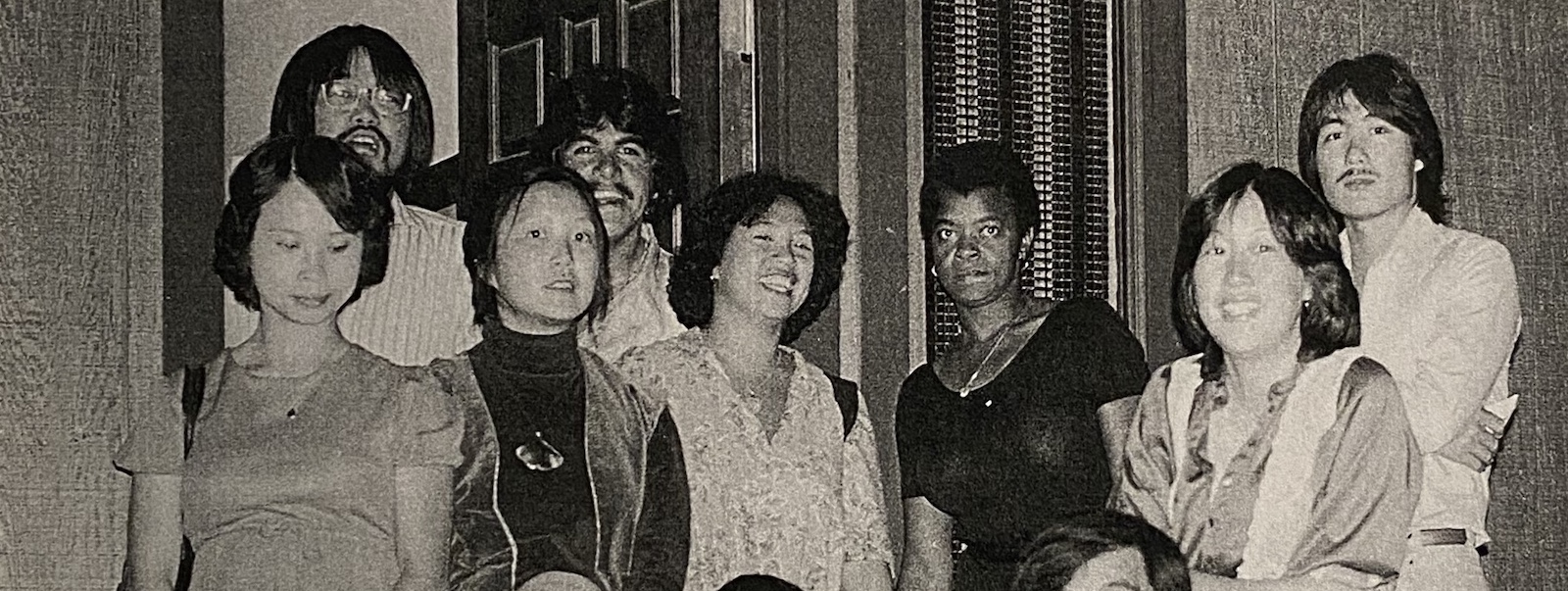Epilogue
Karen here.
And this is Mae. We are now here at the end of Our Narrative.
Our Takeaways
Working on this project has really changed my understanding of how institutional history is constructed.
Before coming to De Anza, I'd barely taken any history classes. I assumed that history was just a straightforward sequence of recorded facts. However, getting to work "behind the scenes" for this project made me realize that history is actually a continuous process of storytelling. And it's far from easy—there are many challenges in creating a coherent narrative from incomplete or even contradictory sources!
However, there was one theme I noticed: the central role of student activism in the creation and ongoing preservation of Ethnic Studies at De Anza. When I started looking through the La Voz archives at the library, I didn't expect to read article after article showing how Asian, Black, Latinx, Native American, Pacific Islander, and other students of color, alongside White allies, rallied to demand representation in the curriculum. They wanted to see their own histories reflected in their education and to empower themselves as agents of change.
What I found equally remarkable is how the institutionalization of these efforts encouraged even more students to speak out and engage, not just within De Anza but in the broader community as well. This tradition of student activism in Ethnic Studies helped create a culture of civic engagement that extended way beyond the classroom. And it wasn't easy—students often had to confront and challenge institutional norms and practices to make these changes a reality.
This project has given me a new appreciation for the role students—like you and me!—have played in shaping this field.
This was such a great project to work on. I've been at De Anza since 2001, and over the years I've heard bits and pieces of the history of Ethnic Studies and Asian American Studies at De Anza. I've wanted to know more, especially because the field of Ethnic Studies usually tells its own origin story—with 1968 and the student strike of the Third World Liberation Front at San Francisco State at the center of the narrative.
I've always wondered: What's the origin of Asian American Studies at De Anza? What's our story?
I've looked into it a few times. Scanning old issues of La Voz. Asking around. When the ASAM website went up in 2020, I think I had part of the picture. Ethnic Studies at De Anza did not fall on the heels of major student unrest, like at SF State. There was student advocacy but not mass protest. Ethnic Studies courses were offered in 1969. An Ethnic Studies division was established in 1969. Ethnic Studies became a graduation requirement for the A.A. degree in 1970. All of this happened within the first few years of the founding of the college. Sounded like pretty smooth sailing.
For sure, De Anza stands out among community colleges in the country for this history. Our Ethnic Studies Division has existed for over fifty years. We've offered courses in African American Studies, Asian American Studies, Chicano and Latinx Studies, and Native American Studies just as long. That's a testament to the stewards of Ethnic Studies. They have championed and protected Ethnic Studies all these years.
What I have come to learn and appreciate through Our Narrative is just how embattled Ethnic Studies was from its founding through the early 2020s. Questions about the legitimacy of the division and the utility of Ethnic Studies have been around since its start. Add to that, rounds of financial austerity, meager budgets, minimal staffing, changing political winds, confusing re-organizations, and bureaucratic rationales for elimination. Ethnic Studies weathered all of that and more.
For Asian American Studies specifically, I can only imagine the effort put forth by its stewards to keep it alive. I was heartened to see in the historical record so many photographs and names of individuals—many unfamiliar to me—who were part of that collective effort.
Who tells this story? Who knows this history?
Asian American Studies is, at heart, a challenge to what we know.
Those who teach Asian American Studies teach against taken-for-granted historical narratives—in which Asian Americans are typically misconstrued or absent entirely. These teachers show how counter-narratives can grow from the inclusion of disregarded people.
Those who are scholars in the field of Asian American Studies generate new knowledge about how we understand the world. Their research and writings push us to see that what counts as legitimate knowledge pivots on who is seen as the protagonist and how much their point of view is valued.
Our Narrative is a new story. It recognizes, affirms, and shares the history of Asian American Studies at De Anza.
For me, digging into the records of Asian American Studies at De Anza opened the door to a larger, collective story that I feel I am now part of.
This project invites us to tell our own story. Because from our own chronicles, we weave a collective story, and that becomes history. Our history.
Written November 20, 2024

